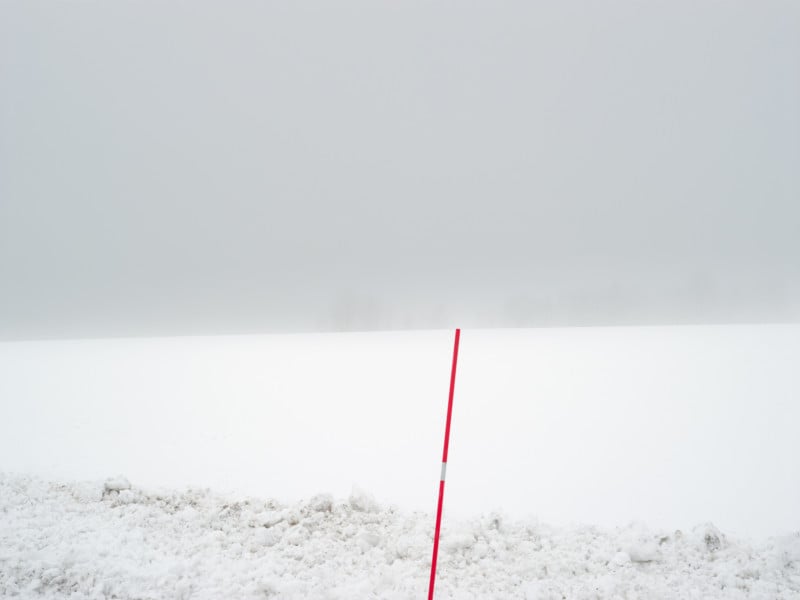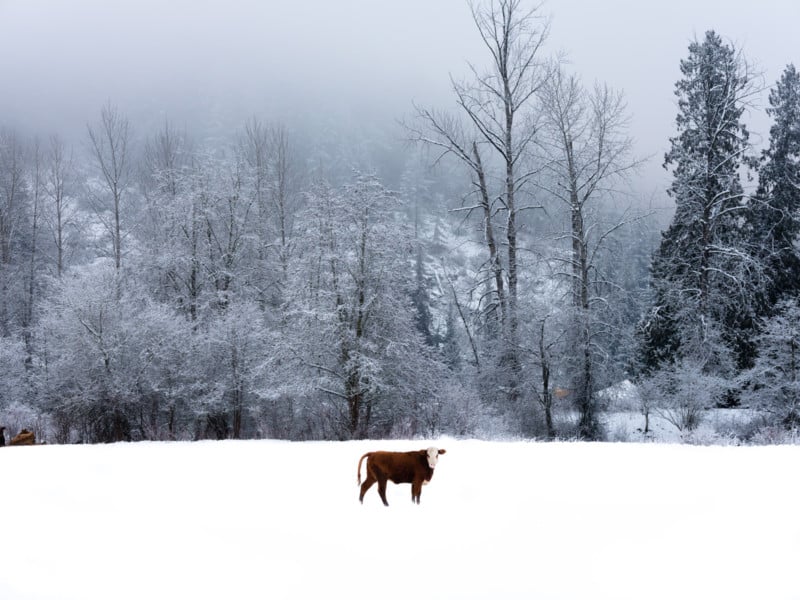![]()
One of the reasons we pursue landscape photography is to connect with nature. Many photographers cite calmness, a sense of peace, and inspiration when they are surrounded by stunning scenery. I am one of them. Unfortunately, it is increasingly common that the encounter is modified by some human-made element.
After all, our impact on the landscape is universal. For most of us, the traces of human activity are distracting and often unwelcome in our photographs. Some photographers, however, include the human element in their frames as part of the landscape.
The results often surprise and amuse.
It was landscape photography that started my photographic journey more than two decades ago. A six-month hospital stay in the intensive care unit and a subsequent kidney transplant led to a long recovery during which time my contact with nature played a crucial role.
The forest and mountain environments, especially, gave me much-needed emotional relief and speeded up my physical recovery. My interest in landscape photography just flowed naturally from that. It manifested itself in extensive travels across North America to photograph the landscape. In time, my interest shifted to travel and contemporary photography as I began to include the human element in my photographs. After years of shooting landscapes and traveling, my interest changed once again to creative street and travel photography, which I enjoyed for many years. Who knew that after many years I would close the circle and come back to landscape photography?

With my predisposition for visual exploration and upon studying the works of Ned Pratt, Edward Burtynsky, Jan Töve, and Chuck Kimmerle, to name a few, I became fascinated with contemporary landscape photography or landscape which includes traces of human activity. It might be Edward Burtynsky’s image of a huge copper mine or the subtle and delicate image of a simple signpost embedded in the winter landscape as seen and crafted by Jan Töve.
It is sometimes quite a struggle to define this challenging subset of landscape photography. In an interview for the Medium Format Magazine, Ned Pratt described it this way:
“By the dregs, I mean the subjects that others leave behind or don’t take seriously — the places where beauty is found only after long consideration and observation, while ignoring the obvious. They are the subjects left when most other combinations of elements in the landscape have been put together by others; almost the scraps of observation.” In simple terms, it could be a lone telegraph pole, an unfinished road, or a fluttering paper in the middle of the road.
David Zimmerman offers the following:
“The pictures from the work ‘Vestiges’ are not about deformations of the picturesque. Rather, they are examples of human activity that are more interesting, less-than-monotonous, and sometimes quizzical efforts, aspirations, and constructions in the places we live. Realizing their impermanence, we might then view these anonymous abandoned structures and traces of our presence in a more informed and compelling framework.”

In fact, some of the work of Chuck Kimmerle, whose in-depth interview you can find in this issue shows such contemporary landscape photography. An example is the image of a hill composed of used car tires or a landscape broken up by an abandoned kite.
“A Garbage Can, Occasionally, Can Be Beautiful”
These extra elements, which go well beyond a typical landscape, offer a photographer unusual ways to formulate visual narrative — an extra tool in the usual compositional arsenal. Although a traditional landscape image usually includes organic and natural components, adding human-made elements such as a garbage can or a power pole introduces tension and an element of surprise.
Of course, the initial reaction to the inclusion might be negative because the scene loses its pure and natural DNA — a valid point for sure. After all, it is a visual trade-off. What is the reward? The clever placement of what appears to be an out-of-place item may enhance the initial response and engage the viewer who would otherwise dismiss the image. It creates visual tension. The unexpected attracts your attention.

An excellent quote by Walker Evans comes to mind:
“A garbage can, occasionally, to me at least, can be beautiful. That’s because you’re seeing. Some people are able to see that — see it and feel it. I lean towards the enchantment, the visual power, of the aesthetically rejected subject.”
The word “rejection” is the key. As someone who has studied and taught the craft of photography, I found that over-commitment to a certain genre prevented many of my students from taking visual risks. Contemporary landscape photography requires a photographer to see beyond natural landscape and constantly look for elements that may not belong, at least at first sight.
It is not that this approach is without danger. I find that including a human-made element in an otherwise pristine landscape, more often than not, simply doesn’t work. The most common trap is to include the element but only later find it not only doesn’t fit the composition, but it destroys it. Therefore, finding a visual connection between the natural landscape and human-made element is one of the greatest challenges in this type of photography.
Balancing the Visual Connection
Here are a few ideas to consider:
- Don’t discriminate between the elements before you. If it is a road sign or a bench, don’t dismiss it automatically even if it is not a natural element.
- Look for a narrative connection. Could an unfinished road or abandoned kite break the visual pattern and trigger a conversation? Think in terms of visual surprise.
- Look for a visual link between extra elements and the natural surroundings. There may not be a narrative connection, but a visual link. For example, the shape of an object might complement your composition.
- Interchange between black/white and colour possibilities might be helpful if the initial composition doesn’t work.
- Finally, consider the educational impact of photography. Edward Burtynsky’s images have triggered honest and thoughtful conversation about our impact on the planet.
Even if you focus only on traditional landscape photography, I think that including some human-made elements in your frame could be a great visual exercise. Of course, we are always navigating on the edge of landscape photography and face the risk of overdoing it. However, I believe that taking a risk is worthwhile. The stunning work by numerous artists presented in this article and in other issues of the ELEMENTS Magazine is the best proof of it.

The article is courtesy of ELEMENTS Magazine. ELEMENTS is the monthly magazine dedicated to the finest landscape photography, insightful editorials and fluid, clean design. Inside you will find exclusive and in-depth articles and imagery by the best landscape photographers in the world such as Charles Cramer, Edward Burtynsky, Michael Kenna, Erin Babnik, Chuck Kimmerle, Rachael Talibart, Hans Strand and John Sexton, Theo Bosboom to name a few. Use the PETAPIXEL10 code for a 10% discount off the annual subscription.
About the author: Olaf Sztaba is a founder and editor-in-chief of the Medium Format Magazine and co-founder of the ELEMENTS Magazine. Olaf spends most of his time curating, writing and photographing in the field, usually exploring less-travelled roads. He is a sought-after speaker and educator.
Image credits: Header image — Untitled (tires), courtesy of David Zimmerman.
"pure" - Google News
April 09, 2022 at 02:09AM
https://ift.tt/EcQgRPA
'Pure' Landscape Photography Versus Including the Human Element - PetaPixel
"pure" - Google News
https://ift.tt/NDv7TMW
https://ift.tt/IxcWJu5
Bagikan Berita Ini














0 Response to "'Pure' Landscape Photography Versus Including the Human Element - PetaPixel"
Post a Comment